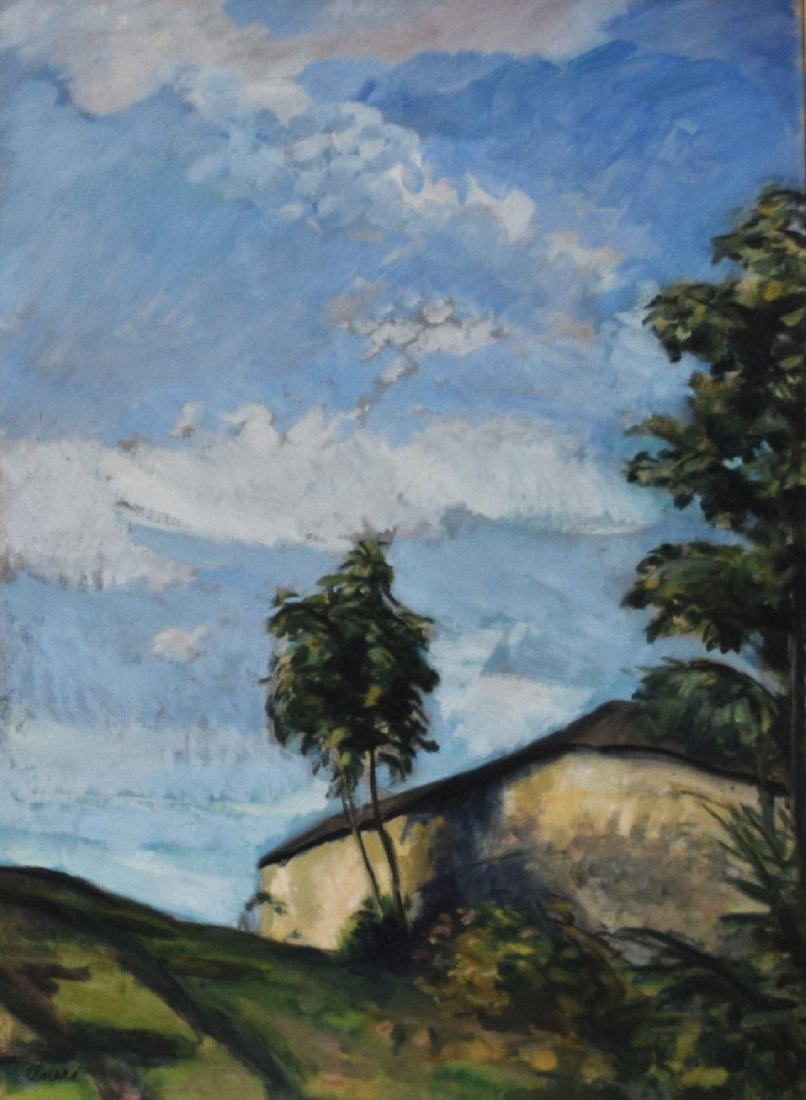Description:
Irena Silberberg (1888-1981) left her family home in Łódź at the age of 15 to study at the Warsaw School of Fine Arts and find herself in the studio of Konrad Krzyżanowski, Karol Tichy and Xawery Dunikowski. At this time, her portraits show strong influences of decadence, supported by the literary work of Stanisław Przybyszewski. These are full of sadness figures with undefined facial features, whose silhouettes are immersed in the darkness*. The color palette used to construct these representations is limited to a narrow range of browns, grays and blacks.
After two years, in 1905 she moved to Munich, where she studied under Hungarian professor Simon Hollósy, combining elements of realism and impressionism in his paintings. The following years hinted at a great love between the student and the teacher. Upon returning to Poland, Irena appeared at the Krakow Academy of Fine Arts, fully aware that only men had access to it. Having obtained information about the available private courses of lecturers, she was able to choose from three: Józef Mehoffer, Jacek Malczewski and Wojciech Weiss. She chose the last one’s studio, whose art became her inspiration, and he himself was the greatest love of her life.
They got married in May 1908 and it is from this moment that Aneri, née Silberberg, is known to us by the pseudonym, which was in fact an anagram of her name. This was dictated by the desire to treat her as an independent artist. Despite taking on the new role of wife and later mother, she did not stop creating, moreover, she did not remain in the shadow of her husband, a highly esteemed artist of Young Poland. In their marriage, a clear division between a housekeeping woman and an engaged professor, and later rector of a higher education institution, was visible. However, both tried to use their artistic talents equally, taking advantage of one studio in Krakow or their parents’ house in Kalwaria Zebrzydowska. Weiss’s death in 1950 did not interrupt Aneri’s artistic activity, who despite her advanced age still participated in numerous competitions. She died at the age of 93, leaving her last painting unfinished.
Description of the painting: Aneri Irena Weissowa is mainly known as a painter of still lifes with flowers and landscapes. She also designed stained glass windows and mosaics. “Landscape” dated before 1918 is a representation of a simple, Polish landscape, most likely from the Kalwaria Zebrzydowska area.
A large part of the canvas is filled with a sunny, blue sky with whitening clouds. Below it stretches a slope of greened hill and a bright synthetic body of a building contrasted with it. In the center of the image field and at the right edge we find trees. They are the only vertical elements of this composition dominated by horizontal and transverse lines. The space seems to be framed in a random way, with a lowered horizon line and an accent placed on the right side of the work.
Asymmetry, meaning of the broken verticals of trees, vertical frame are elements testifying to the inspiration of Japanese art. On the other hand, the choice of the frame, the use of a bright, subtle color palette interspersed with warm shades of browns, yellows and greens, or the quick and decisive strokes of the brush, trying to capture the fleeting image of nature, refer to the painting of her husband.
This luminous slice of reality is filled with undisturbed peace and harmony, which the Weisses valued so much in the Kalwaria nature, captured on many canvases.


